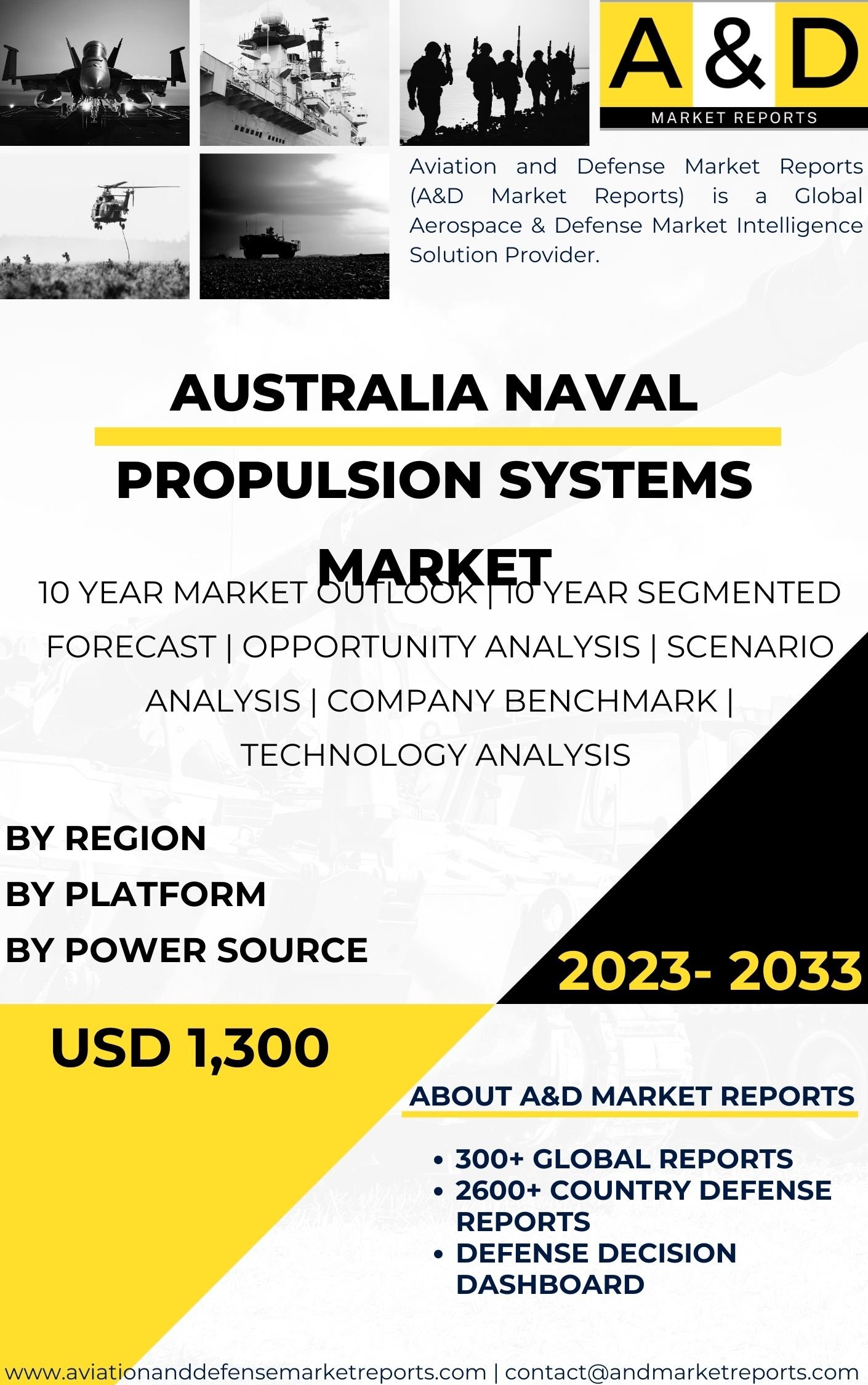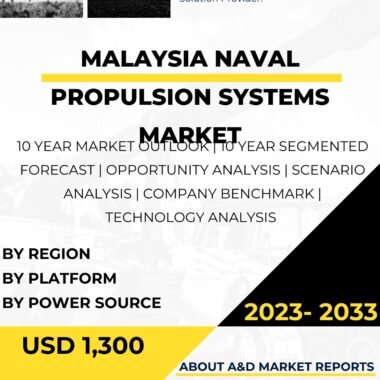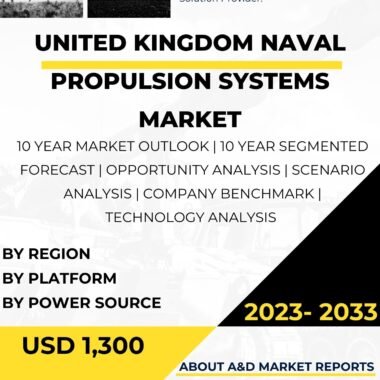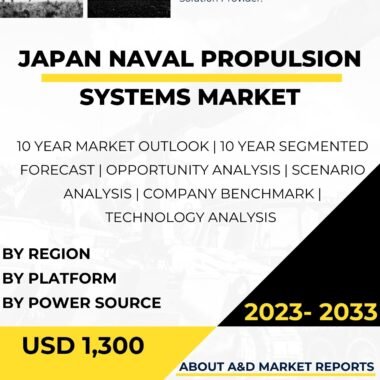Description
The naval propulsion systems market in Australia is a critical component of the country’s maritime defense capabilities, enabling the Royal Australian Navy (RAN) to maintain a modern and effective fleet. Propulsion systems are essential for powering naval vessels, providing the necessary speed, endurance, and maneuverability required for various maritime missions, including coastal defense, anti-submarine warfare, and naval patrols. As a maritime nation with extensive territorial waters and vast maritime interests, Australia relies on advanced naval propulsion technologies to safeguard its maritime sovereignty, protect its trade routes, and contribute to regional security. This article provides a comprehensive overview of the Australia naval propulsion systems market, including its significance, current capabilities, major players, technological advancements, and future prospects.
The significance of the naval propulsion systems market in Australia lies in its role in supporting the country’s maritime defense strategy and enhancing the operational capabilities of the RAN. As an island continent with over 25,000 kilometers of coastline and one of the largest Exclusive Economic Zones (EEZ) in the world, Australia’s maritime security is of paramount importance. Naval vessels equipped with advanced propulsion systems are crucial for patrolling and protecting these vast waters, ensuring the safety of shipping lanes, and responding to potential threats in the Indo-Pacific region.
The Australia naval propulsion systems market encompasses a range of technologies used in various naval vessels, including surface ships, submarines, and support vessels. For surface ships, gas turbine engines, diesel engines, and electric propulsion systems are commonly utilized. Gas turbine engines provide high speed and maneuverability, making them suitable for frigates and destroyers. Diesel engines offer longer endurance and efficiency, making them ideal for patrol vessels and offshore patrol boats. Electric propulsion systems, including podded propulsion and electric drives, enhance maneuverability and reduce noise signatures, making them prevalent in modern naval platforms.
For submarines, the Australia naval propulsion systems market includes diesel-electric propulsion systems, where diesel engines drive generators to power electric motors for propulsion. Some submarines also incorporate air-independent propulsion (AIP) systems, which allow them to operate underwater for extended periods without the need to surface or snorkel for air.
Domestic companies, such as Thales Australia, have made significant contributions to the country’s naval propulsion capabilities. These companies collaborate with international defense contractors to develop and integrate advanced propulsion technologies into the RAN’s fleet.
Major international players, including General Electric, Rolls-Royce, and Siemens, are also present in the Australia naval propulsion systems market. These companies supply advanced propulsion systems for naval vessels, contributing to the RAN’s modernization efforts and capability enhancements.
Technological advancements are a driving force in shaping the future of the Australia naval propulsion systems market. Research and development efforts focus on improving propulsion efficiency, reducing environmental impact, and enhancing propulsion system integration with other ship systems.
In recent years, there has been a growing interest in incorporating alternative and greener propulsion technologies in naval vessels. Hybrid propulsion systems, which combine traditional fuel-based propulsion with battery or fuel cell technologies, offer the potential for reduced emissions and improved fuel efficiency. The adoption of cleaner propulsion technologies aligns with Australia’s commitment to environmental sustainability and efforts to address climate change.
Moreover, research is ongoing in advanced materials and design techniques to develop lightweight and efficient propulsion systems. These advancements contribute to increased vessel speed, range, and endurance while reducing maintenance requirements and lifecycle costs.
Looking ahead, the Australia naval propulsion systems market is expected to witness continued growth and innovation. As the country seeks to modernize its naval fleet and stay at the forefront of naval propulsion technologies, there will be opportunities for domestic and international companies to collaborate on research, development, and production of advanced propulsion systems.
The focus on maritime security and regional stability in the Indo-Pacific region has also led to increased attention on arms exports and technology transfer. Australia’s strategic partnerships and collaborations with other countries may drive the potential for exporting domestic naval propulsion systems to allied nations or engaging in joint research and development projects to address shared security challenges.
Furthermore, as the RAN looks to upgrade and expand its fleet, the demand for advanced propulsion technologies will continue to grow. The introduction of next-generation naval platforms, such as future frigates and submarines, will drive the need for cutting-edge propulsion systems that meet the requirements of increased speed, stealth, and endurance.
In conclusion, the Australia naval propulsion systems market is of significant importance for the country’s maritime defense capabilities and strategic posture. Advanced propulsion technologies enable the RAN to maintain a modern and effective fleet, ensuring the protection of Australia’s vast territorial waters and maritime interests. Collaborations between domestic and international players drive research, development, and innovation in the sector, enhancing the efficiency, endurance, and environmental sustainability of naval propulsion systems. Technological advancements, including hybrid propulsion and advanced materials, will play a crucial role in shaping the future of the market. Continued investments in research, development, and international partnerships will be instrumental in maintaining Australia’s credible and effective naval propulsion capability. As the RAN looks to modernize and expand its fleet, the demand for advanced propulsion technologies will continue to grow, positioning Australia as a key player in the global naval propulsion systems market.




